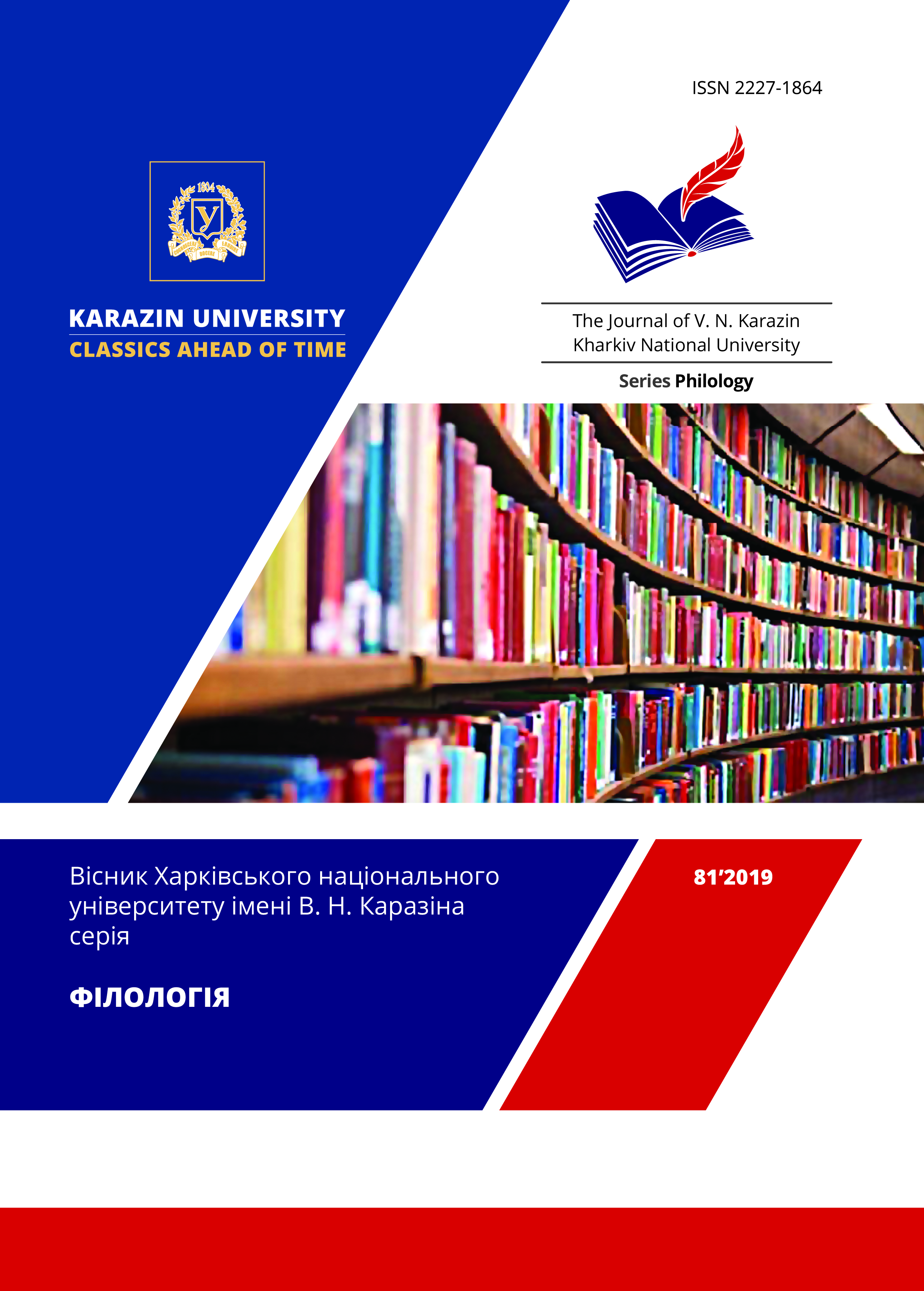«Steppe eagle» a play by O. P. Chuhuy – a sample of drama portrait in the genre system of the author’s biographical creative work
Abstract
Despite the fact, that literary work of O.P. Chuhuy has already become an object of scientific research by A. Novikov, T. Kononchuk, T. Virchenko and others, drama portrait still remains unnoticed by literary critics.
The aim of the author’s research is an attempts to analyze the chosen type of biographical work which requires keeping a specific filling of measure while using actual material and fiction.
The peculiarities of using biographical material in the literary work of O.P. Chuhuy, in particular when creating the images of H. Skovoroda, V. Karazin, O. Kurbas, V. Ivasuk and others are surveyed in the article.
The main attention is concentrated on analyzing the bibliographical portrait of I.P. Kotlyarevskiy, the famous of the new Ukrainian literature, created by O.P. Chuhuy in his play “Steppe eagle” (which appeared in 2012), reflecting his versatile activity aimed of defending the rights of the Ukrainian people for their identity, realizing cultural and enlightment process in their native language.
A high mastery of the author in plot creating, in building up characters, very often by just a few phrases, making up monologs and dialogues, independent of space and time, for that matter, in widely using folklore in confirmed. The important role of drama portrait for achieving of genre diversity of the authors plays is emphasized.
The above works by O.P. Chuhuy testify to complete mastery of biographical genre in the process of drama reflection of the reality, great mastery of using techniques and means of poetics, in particular, when choosing conflicts and characters capable of fighting either to a complete victory or failure, achieving maximal tension, unity and concentration of action, expressive psychological characteristics.
Thanks to these peculiarities of the play I.P. Kotlyarevskiy as a personality is shown multi-faceted and attractive way so typical of him, closely connected with social and political events of that time, in particular, with the desembrist community and national liberation movement.
That is why, the drama portrait created by O.P. Chuhuy in “Steppe eagle” maybe used not only by the teachers of high and secondary schools but also by all admires and masters of literature, music and theatre and hence is worth of being staged by the talented servants of Melpomene.
Downloads
References
Virchenko T. I. Diskurs, evolyuciya, tipologiya hudozhnih konfliktiv ukrayinskoyi dramaturgiyi 1990–2010 rokiv : avtoref. dis. … d-ra filol. nauk : spec. 10.01.01 «Ukrayinska literatura» / Lviv. nac. un-t im. I. Franka. Lviv, 2012. 32 s.
Kononchuk T. I. Vitayemo z dobrim uzhinkom: prosvityaninu i dramaturgu Oleksiyevi Chuguyu – 80 // Slovo Prosviti. 2015. № 4 (796), 29 sichnya – 4 lyutogo. S. 15.
Novikov A. O. Diskurs nacionalno-vizvolnih zmagan v suchasnij ukrayinskij dramaturgiyi (za materialami tvoriv M. Kucya ta O. Chuguya) // Psihologo-pedagogichni osnovi gumanizaciyi navchalno-vihovnogo procesu v shkoli ta VNZ : zb. nauk. prac. Rivne : RVC MEGU im. akad. S. Dem'yanchuka, 2015. № 1 (13). S. 255–261.
Thoruk R. Hudozhnij svit suchasnoyi ukrayinskoyi drami (1990-2002): nazdoganyayuchi tradiciyu // Zapiski naukovogo tovaristva imeni Shevchenka. T. CCXLV. Praci teatroznavchoyi komisiyi. Lviv: B. v., 2003. S. 423, 426, 428.
Chuguj O. P. Stepovij orel: p’yesa-dilogiya: (1. Kriz bureviyi. 2. Pidkorennya vershini). Drama. Harkiv: Oblasne ob’yednannya Vseukrayinskogo tovaristva «Prosvita» im.T.Shevchenka, 2011. 76 s.




